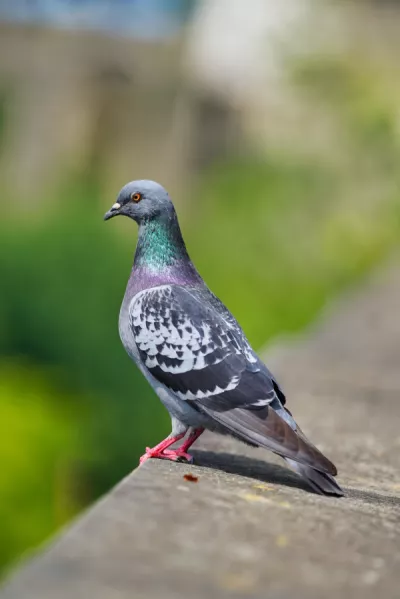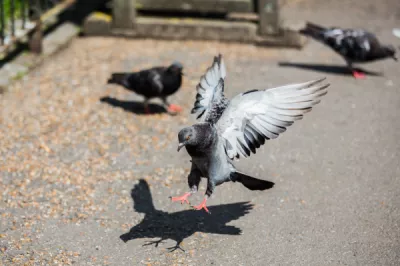Pigeons

Pigeons
These are classified as feral often when found in urban areas. They nest in large numbers and their fouling can carry large numbers of diseases. Our services include proofing - netting/spiking, detraction, dispatch, birds of prey. We also offer high level cleaning services alongside biocide application to remove fouling and reduce risk of ongoing disease transmission/re-infestation.

What makes them a pest?
Primarily the droppings (known as Guano) builds up without much degradation. This can be corrosive and cause damage to infrastructure. Furthermore, the Guano creates dust which can harbour diseases such as Psittacosis and Salmonella. It also provides a breeding ground for blood parasites such as bird mites.
Nesting areas
- An established nesting area can be extremely hard to control and proofing must be installed correctly to ensure pigeons do not simply return to a ‘treated’ area. Spikes must be fitted closely together and netting must be tethered at frequent intervals to prevent passage and trapping pigeons inadvertently.
Many people feed pigeons. The number of pigeons attracted to an area depends on the food available. If pigeons are being fed, more pigeons will be attracted to that area. All pigeons require nesting and roosting sites (eg balconies, window ledges and roof areas of surrounding buildings) as well as reliable food sources. It is vital that food sources for pigeons are kept to a minimum. There have been a number of cases where people have been prosecuted for causing a health risk by repeatedly feeding pigeons.
Pigeons are regarded as unacceptable, especially in large numbers. They have the potential to transmit disease causing organisms.
Problems may arise when pigeons roost on buildings as they foul from ledges and other nesting or roosting areas.
Their droppings cause an unsightly mess and may also cause slip hazards on walkways and pavements.
Human disease transmission
Birds are associated with dissemination of the causative agents of a large number of diseases that can affect the health of humans. There are more than 110 pathogens (8 virus, 55 fungi, 41 bacteria, 6 protozoa) reported to affect pigeons. Scientific papers implicating wild birds in the dissemination of zoonoses are easily found. These studies give pest controllers ample reasons for arguing that birds and their droppings can be a hazard to public health and that bird management could help in preventing the spread of disease. However, reports of actual cases of human diseases transmitted from birds are relatively rare (though it is likely that the majority of cases go unreported).
Pigeon control
Multipest has a number of methods at our disposal including netting, bird spikes, gel, electric tracks, controlled culling and trapping. We also have a team of dedicated abseilers to ensure that even the most difficult of locations can be reached
Bird Fouling creates not only an eyesore on buildings, walkways and front signage of businesses, it also has potential health risk implications that few businesses can afford i.e. Salmonella, Ornithosis (Feral Pigeons) and E.Coli (Gulls).
Slip hazards can also be created on walkways in and around buildings from bird fouling, and due to the acidic nature of bird fouling, the fabrication and stonework of buildings can become damaged and weakened. Multipest offers a selection of Bird Control and Clearance Methods including:
- Universal Bird Point System – Can be installed on horizontal ledges, window ledges and other sites used by pigeons and gulls to deny them perching and roosting sites.
- Specialised Bird Netting – Can be installed into areas where prevention of bird ingress is required. A team of specialised installation and design technicians can tailor this form of bird control to any individual situation.
- Pigeon Clearance Works – No matter how small or large the amount of bird fouling, it creates serious health risks to humans and the correct disposal of such waste is essential. Multipest offer a professional and efficient fouling clearance and disinfection service throughout a wide spectrum of situations.
- Electric Bird Deterrent System- This latest generation of bird deterrent system works by sending a pulse of electricity to prevent birds from landing. Ideal for all locations as it is discreet, reliable and ideal for the changeable UK weather. It is used extensively on heritage sites and challenging building specifications.
